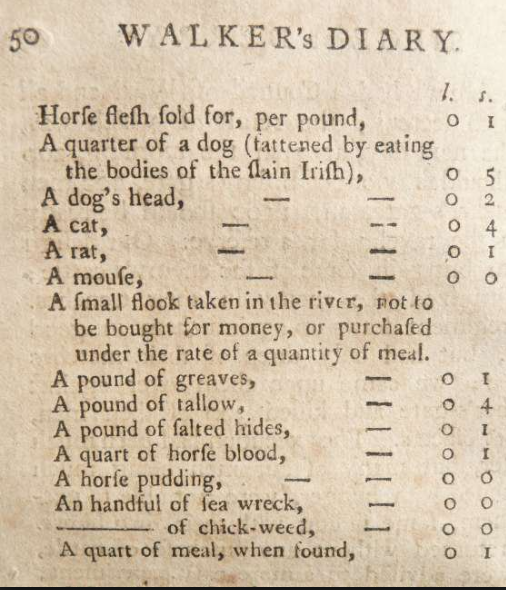The 1821 census of Ireland
If I had a wish list of materials or manuscripts that could have been saved from the destructive explosion and fire in the PRO in 1922 the 1821 census would be high on the list. In fact, it might actually make the top of the list.
The reason for this is that this census named every man, woman and child in Ireland two decades before the Famine (the 1831 census named only the head of household). It also names many people born in the eighteenth century. The 1841 and 1851 census returns also perished in the PRO at the same time (those for 1861-1871 were destroyed shortly after they were taken and those for 1881-1891 were pulped during the First World War as there was a paper shortage).
http://www.ulstergenealogyandlocalhistoryblog.com/2017/07/1831-census-abstracts-co-lderry.html
William Saw Mason was charged with the task of administering the 1821 census. The enumerators employed were mostly tax collectors by profession. In an effort to overcome the populations hostility contact was made with local clergymen, who were asked to assist in 'controlling the proceedings of the Enumerators and for removing any prejudices that might tend to produce and unkindly feeling towards them in the minds of the lower classes' (Counting the People, E Margaret Crawford Four Courts Press, 2003 page 14). The suspicion of the majority Catholic population on the island was understandable since the penal period was still fresh in the memories of the older generation and Catholics had yet to attain complete emancipation from these punitive laws (the Catholic Emancipation Act was enacted in 1829). The enumerators were also regarded with suspicion given that most were identified with the landowning class.
The greatest obstacle in the administration of the census was the lack of maps defining spatial boundaries and incomplete lists of townland and parish names. This may have resulted in a degree of under-enumeration. The official population of Ireland from this census was 6.8 million (but according to JJ Lee this was underestimated by about 5% and his estimate was 7.2 million).
The census was quite simple in its layout and that perhaps was its greatest strength. There were seven columns on the form as one can see below for Cran in Aghalurcher parish in Co Fermanagh. In the second column a simple observation indicated the number of stories in the house - for most rural parishes one was the most common return but in urban centres such as Dublin multiple stories would have been recorded here. The third column identified each of the inhabitants in the house on census night (28 May 1821) and the relationship of each to the head of household. The fourth and fifth columns indicated the age and occupation of those present of working age. The sixth column gave some very useful information as it indicated the approximate size of the farm or the landholding. The final column recorded any additional observations by the enumerator (examples include recording land held in a different townland or that a flax mill was operational on the farm or in one case where the enumerator recorded 'husband in America').
http://www.ulstergenealogyandlocalhistoryblog.com/2017/07/1831-census-abstracts-co-lderry.html
William Saw Mason was charged with the task of administering the 1821 census. The enumerators employed were mostly tax collectors by profession. In an effort to overcome the populations hostility contact was made with local clergymen, who were asked to assist in 'controlling the proceedings of the Enumerators and for removing any prejudices that might tend to produce and unkindly feeling towards them in the minds of the lower classes' (Counting the People, E Margaret Crawford Four Courts Press, 2003 page 14). The suspicion of the majority Catholic population on the island was understandable since the penal period was still fresh in the memories of the older generation and Catholics had yet to attain complete emancipation from these punitive laws (the Catholic Emancipation Act was enacted in 1829). The enumerators were also regarded with suspicion given that most were identified with the landowning class.
The greatest obstacle in the administration of the census was the lack of maps defining spatial boundaries and incomplete lists of townland and parish names. This may have resulted in a degree of under-enumeration. The official population of Ireland from this census was 6.8 million (but according to JJ Lee this was underestimated by about 5% and his estimate was 7.2 million).
The census was quite simple in its layout and that perhaps was its greatest strength. There were seven columns on the form as one can see below for Cran in Aghalurcher parish in Co Fermanagh. In the second column a simple observation indicated the number of stories in the house - for most rural parishes one was the most common return but in urban centres such as Dublin multiple stories would have been recorded here. The third column identified each of the inhabitants in the house on census night (28 May 1821) and the relationship of each to the head of household. The fourth and fifth columns indicated the age and occupation of those present of working age. The sixth column gave some very useful information as it indicated the approximate size of the farm or the landholding. The final column recorded any additional observations by the enumerator (examples include recording land held in a different townland or that a flax mill was operational on the farm or in one case where the enumerator recorded 'husband in America').
1821 census form




Comments
Post a Comment